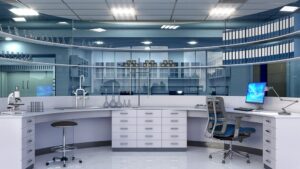
In today’s fast-paced research and development environments, collaboration is key to innovation. Whether it’s scientific discovery, product development, or problem-solving, teamwork drives results. The design of a laboratory can significantly impact how well teams work together, making it essential to create collaborative spaces that foster communication, flexibility, and efficiency.
Thoughtful furniture choices play a vital role in creating these collaborative environments, where functionality meets comfort and innovation.
At Genie Scientific, we understand that a laboratory’s layout and furniture are more than just aesthetic decisions—they are critical components that shape how teams interact, share ideas, and drive progress.
In this article, we explore furniture ideas designed to optimize teamwork in lab settings, with a focus on flexibility, ergonomics, and durability. Whether you’re designing a new lab or updating an existing one, we’ll guide you through creating a collaborative space where ideas thrive.
Key Considerations for Collaborative Laboratory Spaces

Creating a laboratory that encourages collaboration requires more than just open space—it demands furniture that supports teamwork, flexibility, and efficient workflows. When designing a collaborative lab, several key factors must be considered to ensure that the space serves the needs of diverse teams while fostering a productive environment.
– Flexibility: Collaborative work often involves shifting tasks, evolving projects, and the need to accommodate varying group sizes. Furniture that can be easily moved, reconfigured, or adjusted ensures that the space can adapt to the changing dynamics of the team.
Modular workstations and mobile furniture provide the flexibility to shift between independent research and group collaboration quickly.
– Ergonomics: Lab work can involve long hours at workbenches, computers, or equipment stations. Ensuring that the furniture supports proper posture and reduces strain is essential for both comfort and productivity.
Ergonomically designed chairs, adjustable-height workbenches, and footrests help minimize fatigue, allowing teams to focus on their tasks without the distractions of discomfort.
– Durability and Safety: Laboratories are high-traffic environments, with constant movement of people and equipment. Furniture must be built to withstand heavy use and exposure to chemicals or other harsh conditions.
Choosing durable materials like powder-coated steel and stainless steel ensures that the furniture is long-lasting, easy to clean, and safe for both researchers and the lab environment.
– Technology Integration: Today’s labs are powered by technology, from computers to specialized equipment. Collaborative spaces must be equipped to support the seamless integration of these tools.
Workstations with built-in power outlets, data ports, and cable management systems ensure that teams can connect their devices without clutter, promoting a more organized and efficient workspace.
By addressing these considerations, you can create a lab environment that encourages collaboration and enhances the overall experience for the teams working within it.
Types of Furniture Ideal for Collaborative Labs
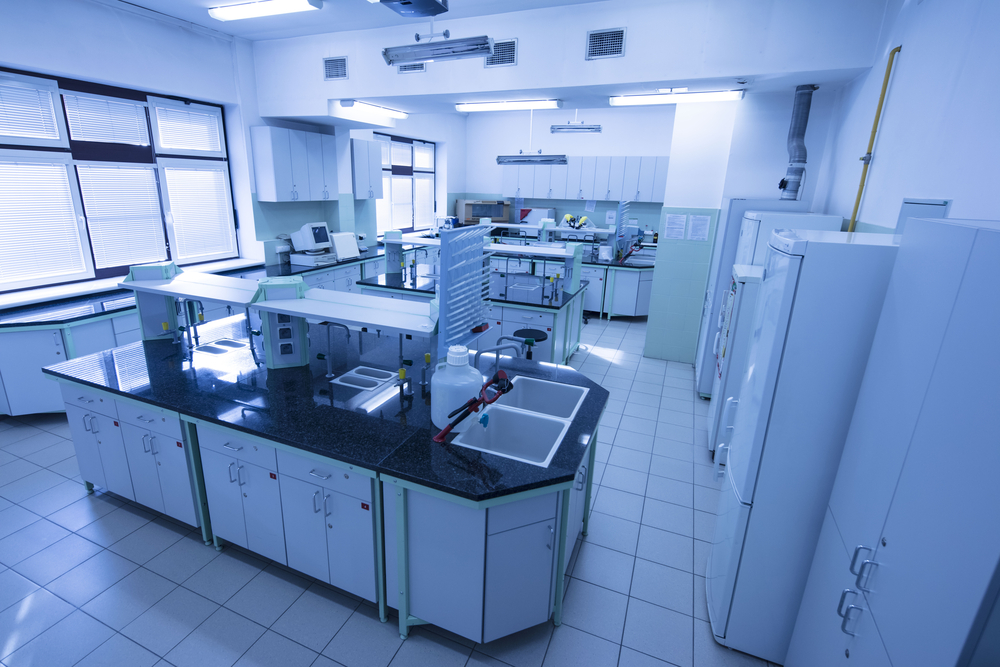
Selecting the right furniture is crucial for creating a lab environment that supports teamwork and collaboration. Collaborative labs require flexible, functional, and durable furniture that can accommodate the dynamic needs of research teams. Below are some key types of furniture that are ideal for fostering collaboration in laboratory settings:
– Modular Workbenches: One of the most versatile furniture options for collaborative labs, modular workbenches can be easily reconfigured to fit different tasks and team sizes.
These workbenches allow multiple researchers to work side by side or across from each other, facilitating communication and collaboration. Additionally, their adjustable height features ensure ergonomic comfort for users, whether they are sitting or standing.
– Mobile Workstations: Mobility is key in a collaborative lab. Mobile workstations allow teams to re-arrange their workspace on the fly, accommodating new experiments, larger groups, or impromptu meetings.
These stations often come equipped with locking wheels, ensuring stability when needed and easy movement when reconfiguration is required. Mobile furniture adds a layer of flexibility that static workstations cannot offer.
– Shared Storage Solutions: Laboratories are filled with equipment, tools, and materials that need to be easily accessible to everyone in the space. Shared storage units, such as open shelving, mobile carts, or lockable cabinets, provide organized storage that is accessible to all team members.
By keeping equipment within reach, researchers can focus more on collaboration and less on searching for tools or materials.
– Seating Options for Team Settings: Comfortable, ergonomic seating is essential in collaborative lab environments. Rolling chairs or stools with adjustable heights allow team members to move freely between workstations or group discussions.
Additionally, benches designed for group seating can encourage teamwork and communication in shared lab areas or breakout spaces.
Each of these furniture options helps create a laboratory environment where teams can work together more effectively. By incorporating flexible, mobile, and comfortable furniture solutions, labs can better support the dynamic nature of collaborative research and innovation.
Incorporating Collaborative Zones in the Lab
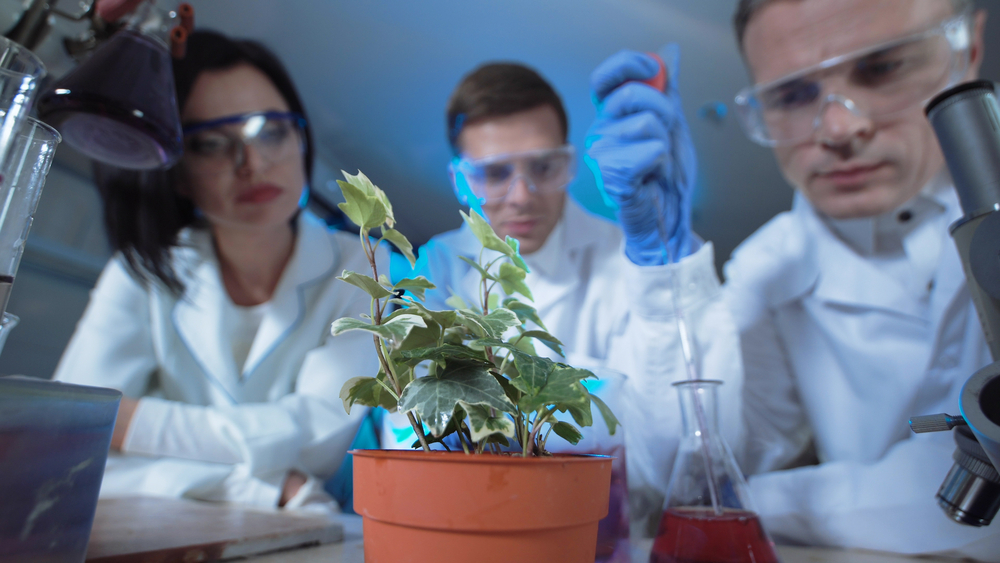
Designing a collaborative lab is about more than just the right furniture—it’s also about creating distinct zones that encourage different forms of teamwork and interaction. By strategically organizing the lab into collaborative zones, you can promote communication, creativity, and efficiency while still maintaining a functional and organized workspace. Below are some key types of collaborative zones to consider:
– Open Layouts: Open-plan layouts allow for fluid communication between team members and create a sense of openness that fosters interaction. In a lab setting, this means minimizing physical barriers like walls or partitions between workstations, making it easier for team members to share ideas and collaborate in real-time.
Open layouts also offer flexibility, allowing furniture and equipment to be reconfigured as needed to suit different tasks or team sizes.
– Breakout Spaces: While most of the lab will be dedicated to hands-on work, it’s equally important to have informal breakout spaces where team members can step away from the workbench for brainstorming, problem-solving, or casual discussions.
These areas can include comfortable seating, whiteboards, and even digital displays to facilitate the free flow of ideas. Breakout spaces encourage creativity and can serve as a valuable tool for fostering teamwork and innovation.
– Conference Areas: Dedicated conference areas within the lab are essential for team meetings, project reviews, or more formal collaboration sessions. These spaces should be equipped with large tables, comfortable seating, and the necessary technology for presentations or data sharing.
Conference areas create a professional setting where teams can regroup, discuss results, or plan future experiments without disrupting ongoing work in the lab.
– Quiet Work Zones: Collaboration is vital, but it’s also important to balance it with spaces that allow for focused, individual work. Quiet work zones provide a place for researchers to concentrate on tasks that require deep focus, such as data analysis or report writing.
These zones can be located away from high-traffic areas, ensuring minimal distractions while still being part of the collaborative lab environment.
Incorporating these zones helps create a well-rounded lab space where teams can shift seamlessly between different modes of work—whether it’s active collaboration, casual discussions, or focused individual efforts. By planning these areas thoughtfully, you can ensure that your lab remains efficient while promoting a culture of teamwork and innovation.
Furniture Materials and Design Choices
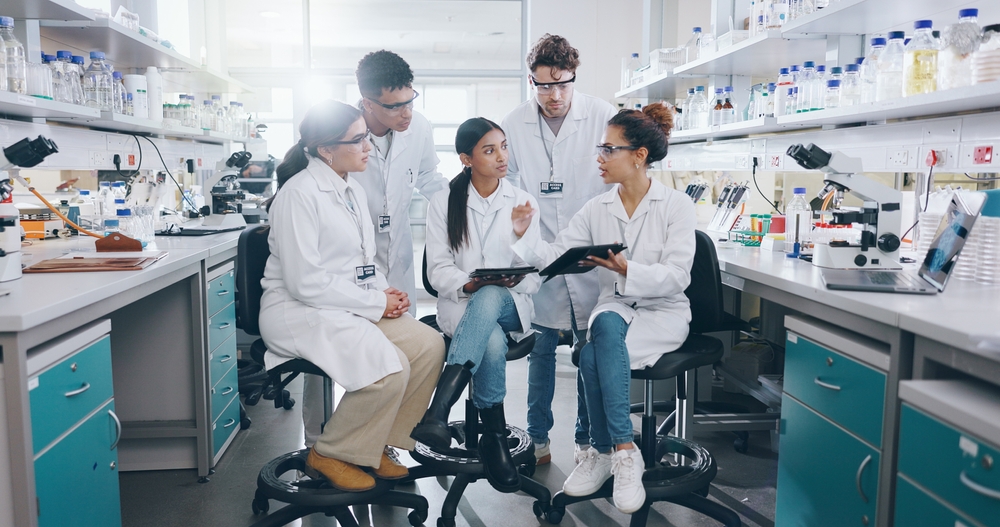
When designing collaborative laboratory spaces, the choice of materials and design is critical. The right materials not only enhance the aesthetic appeal of the lab but also contribute to its functionality, durability, and safety. Here are some key considerations for selecting materials and design choices for laboratory furniture:
– Powder-Coated Steel: Known for its strength and resistance to corrosion, powder-coated steel is an excellent choice for laboratory furniture. This material provides durability to withstand the rigors of daily use in a busy lab environment. The powder coating adds an attractive finish and enhances resistance to scratches and chemicals, making it ideal for workstations and storage solutions.
– Stainless Steel and Other Metals: Stainless steel is another popular material choice in laboratory settings, particularly for surfaces that require high hygiene standards. Its non-porous nature makes it easy to clean and sanitize, which is vital in labs where contamination must be minimized. Additionally, stainless steel is resistant to rust and corrosion, ensuring longevity and reliability for workbenches, sinks, and storage units.
– Sustainable Materials: As environmental consciousness grows, many laboratories are looking for eco-friendly furniture options. Sustainable materials, such as recycled wood or eco-friendly composites, can reduce the environmental impact of lab furnishings. Choosing furniture made from sustainable resources benefits the planet and reflects a commitment to corporate responsibility.
– Ergonomic Design: Ergonomics should be at the forefront of furniture design in collaborative labs. Workstations that adjust for height, chairs that provide lumbar support, and desks that accommodate different postures contribute to the well-being and productivity of researchers. By prioritizing ergonomic design, you can reduce the risk of strain and injury, allowing teams to focus on their work without discomfort.
– Customizable Options: Every laboratory has unique needs, and having customizable furniture solutions can make a significant difference. Many furniture manufacturers offer modular designs that can be tailored to specific laboratory requirements, allowing teams to create layouts that best support their workflow. Customization options can include various finishes, sizes, and configurations to suit different tasks and team dynamics.
By carefully selecting materials and design choices that prioritize durability, functionality, and sustainability, you can create a collaborative lab space that meets the needs of diverse teams while enhancing overall efficiency and comfort. Investing in high-quality furniture ensures that your lab remains a productive and inspiring environment for collaboration.
Additional Reading: Eco-Friendly Laboratory Furniture: Sustainable Options for Modern Labs
Enhancing Collaboration with Technology Integration
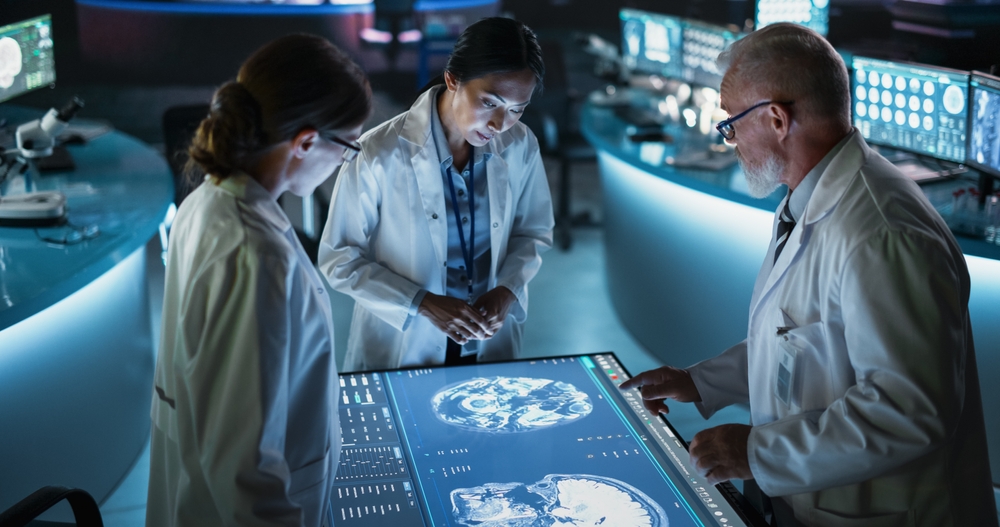
In today’s fast-evolving laboratory environments, the integration of technology is essential for facilitating collaboration and improving productivity. By incorporating technological solutions into the furniture and layout of collaborative labs, you can create a seamless and efficient workspace that enhances teamwork and innovation. Here are several key ways to enhance collaboration through technology integration:
– Built-in Power and Data Ports: One of the most effective ways to support teamwork is by ensuring that team members have easy access to power and data sources. Workstations equipped with built-in power outlets and USB ports eliminate the clutter of cords and cables while allowing researchers to charge devices and connect equipment without disruption.
This convenience encourages spontaneous collaboration, as team members can easily set up and share technology during discussions or experiments.
– Interactive Displays: Incorporating interactive displays, such as smart boards or touchscreens, can significantly enhance collaboration in the lab. These tools facilitate real-time data visualization, brainstorming, and presentations, making it easier for teams to share information and ideas.
Interactive displays allow for dynamic discussions where team members can contribute simultaneously, fostering a more engaging and collaborative environment.
– Video Conferencing Systems: For labs with remote team members or partnerships, video conferencing systems are crucial for maintaining effective communication. Integrating high-quality audio and video equipment within designated collaboration areas ensures that all participants can engage fully, regardless of their location.
This technology supports brainstorming sessions, project meetings, and presentations, keeping everyone connected and informed.
– Cable Management Systems: A well-organized workspace is essential for maintaining a collaborative environment. Implementing cable management solutions keeps cords hidden and organized, reducing clutter and minimizing distractions.
Clean, organized workspaces enable teams to focus on their tasks and facilitate smoother transitions between different collaborative zones within the lab.
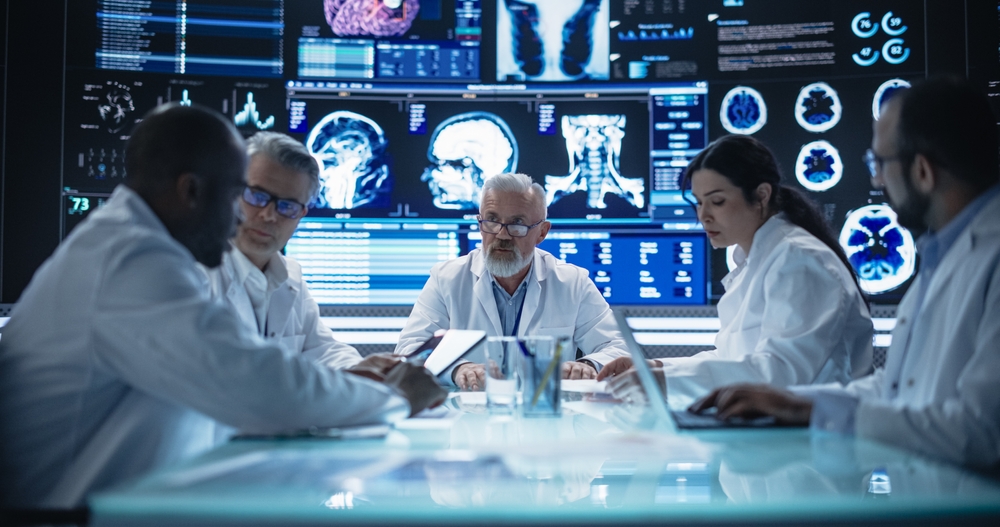
– Collaboration Software: Utilizing collaboration software can enhance communication and project management among lab teams. Platforms that allow for file sharing, real-time editing, and task management enable team members to work together efficiently, whether they are in the lab or working remotely.
Integrating these tools into the lab’s technology setup ensures that everyone is on the same page and can contribute to ongoing projects seamlessly.
By thoughtfully integrating technology into the collaborative lab space, you can create an environment that enhances communication, fosters teamwork, and streamlines workflows. The right technological solutions not only support the needs of modern research teams but also inspire innovation and creativity in collaborative efforts.
Genie Scientific’s Expertise in Collaborative Lab Design
At Genie Scientific, we recognize that a well-designed laboratory is essential for fostering innovation, productivity, and teamwork. Our commitment to creating tailored laboratory solutions has made us a leader in the field, providing clients with the expertise they need to develop collaborative lab environments that meet their unique needs.
With years of experience in laboratory design and construction, our team understands the intricacies of creating spaces that encourage collaboration and optimize workflow.
We prioritize a collaborative approach in our design process, working closely with clients to understand their specific goals, challenges, and vision for their laboratory. This collaborative mindset ensures that the final design meets functional requirements and fosters an inspiring environment where creativity can flourish.
One of the hallmarks of our service is the ability to provide customizable furniture solutions that fit seamlessly into various laboratory setups.
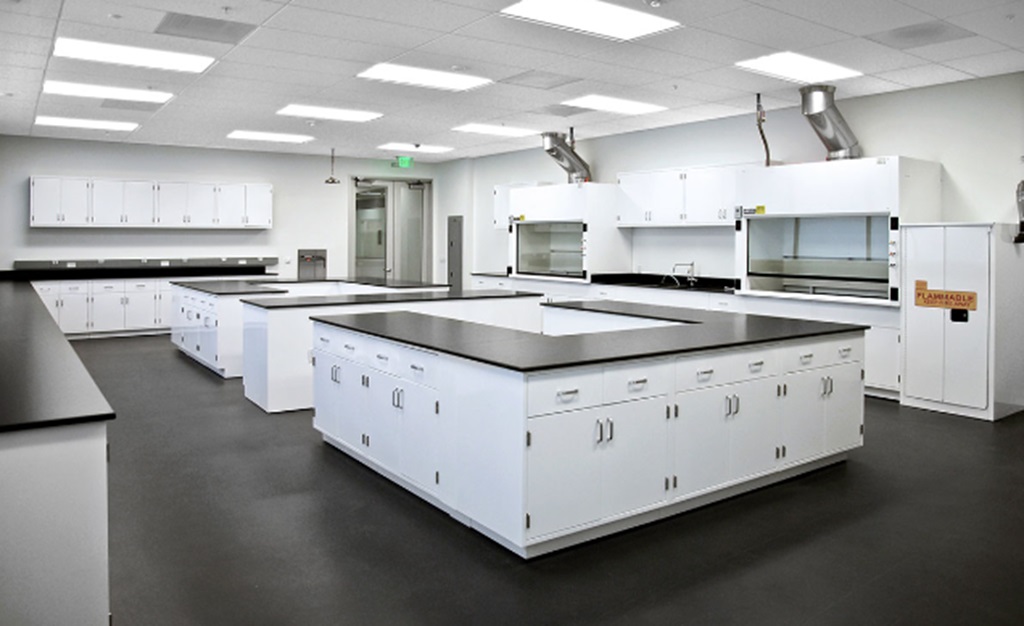
From modular workstations that adapt to changing team sizes to mobile carts that enhance flexibility, our furniture options are designed to facilitate teamwork and communication. We also focus on incorporating ergonomic and durable materials, ensuring that the furniture stands the test of time while promoting the well-being of users.
Our portfolio includes a diverse range of laboratory projects, showcasing our ability to design spaces for different fields, including life sciences, chemistry, and engineering.
Each project reflects our commitment to quality, innovation, and functionality, with careful attention to how the layout and furniture contribute to collaborative efforts. By utilizing state-of-the-art technology and adhering to the highest safety standards, we create environments that support both individual tasks and group collaboration.
In summary, Genie Scientific’s expertise in collaborative lab design equips clients with the tools they need to foster teamwork and drive innovation. Our comprehensive approach, combined with customizable furniture solutions and a focus on user experience, ensures that your laboratory will be a dynamic and inspiring space where teams can thrive.
Conclusion
Creating a collaborative laboratory space is essential for driving innovation and enhancing productivity among research teams. By thoughtfully selecting furniture, incorporating flexible zones, and integrating technology, laboratories can foster an environment that encourages teamwork and creativity. From modular workstations to shared breakout areas, every element of design plays a vital role in supporting collaboration.
At Genie Scientific, we are dedicated to helping you create a laboratory space that meets your unique needs and enhances the collaborative spirit of your team. Our expertise in designing customizable lab solutions ensures that your workspace will be both functional and inspiring.
Are you ready to transform your laboratory into a collaborative environment that fuels innovation? Contact Genie Scientific today to discuss your design needs and discover how our tailored solutions can elevate your laboratory experience. Let’s work together to create a space where teamwork thrives and ideas come to life!

